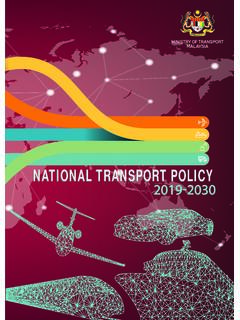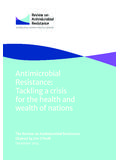Transcription of The United Kingdom’s Strategy for Countering Terrorism
1 CONTESTThe United Kingdom s Strategy for Countering TerrorismJune 2018Cm 9608 CONTESTThe United Kingdom s Strategy for Countering TerrorismPresented to Parliament by the Secretary of State for the Home Department by Command of Her MajestyJune 2018Cm 9608 Crown copyright 2018 This publication is licensed under the terms of the Open Government Licence except where otherwise stated. To view this licence, visit we have identified any third party copyright information you will need to obtain permission from the copyright holders publication is available at enquiries regarding this publication should be sent to us at 978-1-5286-0209-9 CCS0218929798 06/18 Printed on paper containing 75% recycled fibre content minimumPrinted in the UK by the APS Group on behalf of the Controller of Her Majesty s Stationery Office 1 ContentsForeword by the prime minister 3 Foreword by the Home Secretary 5 Executive Summary 7 Introduction 13 Part 1: Strategic context 15 The threat from Terrorism 15 Strategic factors 23 Part 2: Our Response 25 CONTEST: the UK s response to Terrorism 25 Prevent 31 Pursue 43 Protect 53 Prepare 63 Overseas 70 Cross-cutting responses 78 Part 3.
2 Implementation 83 Governance and oversight 83 Funding 86 Performance 87 Annex: Roles and responsibilities 892 CONTEST: The United Kingdom s Strategy for Countering TerrorismForeword by the prime minister 3 Foreword by the prime MinisterLast year s horrific attacks on London and Manchester served as a stark reminder of the continued threat that Terrorism poses, both to our people and to our way of inspired by Islamist extremism, the far right, or the situation in Northern Ireland, the overarching goal of individual terrorists and the groups that support them is the same to inflict harm, to inspire fear and, in so doing, look to undermine the very fabric of our cannot and will not be allowed to the Government s publication of its last Counter Terrorism Strategy in 2011, we have taken comprehensive action to address risks both in the UK and abroad. With its help, the police and security services have foiled 25 Islamist plots since June 2013, and four extreme right wing terror plots in the past year all its successes, in the years since the Strategy was implemented the threat we face from Terrorism has not stood still.
3 The war in Syria, which was in its infancy when the last Strategy was published, has created both a haven and a training ground for British and foreign terrorists. UK citizens have been targeted in attacks overseas, for example in Sousse in 2015. Even the nature of attacks has changed, with vehicles increasingly used as weapons with which to kill and maim innocent the wake of the attacks in London and Manchester I pledged a comprehensive review of our approach to counter Terrorism to ensure it was working as effectively as possible. This new Strategy is the result of that review: building on progress made since 2011 and evolving to counter new and emerging threats, to reflect the changing situation around the world, and to learn lessons from the tragic attacks in the UK over the past the threat we face is large and multi-faceted, this Strategy has a much greater focus on systemic co-ordination across the public sector.
4 By linking up not just the intelligence agencies but also local authorities, health providers and many others, it will make it harder than ever for terrorists and those who support them to plan and carry out joined-up approach uniting Government, the wider public sector and individuals around a common goal of preventing Terrorism mirrors the public s response to the terrorist atrocities we witnessed last year. In the days and weeks after the attacks I was proud of the way the country came together in defiance of those who would drive us CONTEST: The United Kingdom s Strategy for Countering TerrorismOur refusal to be defeated by Terrorism is our greatest asset in the fight against it. But to be truly effective it must be twinned with practical measures to prevent extremism, to pursue those who would do us harm, to protect our country against attack and to be properly prepared should the worst Strategy will provide the police, security services and others with the support and direction they need to do just Hon Theresa May MPPrime MinisterForeword by the Home Secretary 5 The first duty of the government, and my highest priority as Home Secretary, is to protect the public.
5 The attacks of last year shocked us all. But instead of tearing our society apart, they merely strengthened our resolve and commitment to our shared values. This Strategy sets out how this government will continue to respond to the serious and evolving threat posed by Terrorism in a manner that preserves our way of life. Terrorists ambition is to divide us to drive a wedge between people of different backgrounds. Recently, we have seen Daesh take advantage of political instability and conflict to gain a foothold in Syria and Iraq. Despite action by a global coalition to reduce its territory and infrastructure, Daesh s actions and propaganda mean it remains the most significant terrorist threat we face today. That said, Al Qa ida continues to pose a persistent threat to the West and domestically we also face an increasing threat from extreme right-wing Terrorism as well as a persistent risk from Northern Ireland related Terrorism .
6 The threat we face is multifaceted, diverse and evolving. The stark reality is that it will never be possible to stop every attack. We do not live in a surveillance state and nor do we want to. Our response must therefore continue to be proportionate, inclusive and subject to strong oversight. By working together, with the police, security and intelligence agencies, the private and public sectors, civil society, international partners, and of course the public, we will make sure that terrorists cannot and will not change our way of Hon Sajid Javid MPHome SecretaryForeword by the Home Secretary6 CONTEST: The United Kingdom s Strategy for Countering TerrorismExecutive Summary 7 Executive Summary1 Our response to counter- Terrorism is built on an approach that unites the public and private sectors, communities, citizens and overseas partners around the single purpose to leave no safe space for terrorists to recruit or act.
7 Our Strategy , CONTEST, is the framework that enables us to organise this work to counter all forms of Terrorism . CONTEST s overarching aim remains to reduce the risk to the UK and its citizens and interests overseas from Terrorism , so that our people can go about their lives freely and with Strategic context2 The threat from Terrorism , globally and in the UK, is higher than when we last published CONTEST in 2011. The UK is facing a number of different and enduring terrorist threats. The increased threat has mainly been caused by the rise of Daesh2 and the creation of its cult-like Caliphate , combined with the persistent threat from Al Qa ida. Daesh has been constrained militarily by the actions of a global coalition in which the UK is playing a leading role, which has eroded most of its territory and severely degraded its central propaganda apparatus. But Daesh s ability to direct, enable and inspire attacks still represents the most significant global terrorist threat, including to the UK and our people and interests overseas.
8 Daesh s methods are already being copied by new and established terror Using pernicious, divisive messaging and amplifying perceived grievances, Daesh and Al Qa ida exploit the internet to promote warped alternative narratives, urging extremists within our own communities to subvert our way of life through simple, brutal violence. They deem anyone who does not share their rejectionist views as a legitimate target and any method of murder acceptable. They cynically groom the vulnerable and the young to join their movement, inspiring people within our own communities to commit senseless acts of violence. The recent attacks across Europe and the UK have also served to highlight the diversity and accessibility of methods by which individuals who are vulnerable to these radicalising messages can commit This Strategy replaces the previous CONTEST and supersedes the Prevent Strategy , both published in 2011.
9 2 Also known as the Islamic State of Iraq and the Levant, ISIL. 8 CONTEST: The United Kingdom s Strategy for Countering Terrorism4 This has had a profound effect on the threat to the UK, seen so starkly through the attacks in 2017. The current UK National Threat Level is SEVERE, meaning an attack is highly Islamist terrorism4 is the foremost terrorist threat to the UK. Extreme right-wing Terrorism is a growing threat. In December 2016, the then Home Secretary proscribed the first extreme right-wing group, National Action, under the Terrorism Act 2000. The Government took further action in September 2017, proscribing Scottish Dawn and National Socialist Anti-Capitalist Action as aliases of National Action. Northern Ireland related Terrorism remains a serious threat, particularly in Northern Ireland itself. 5 In 2017, we saw a significant shift in the terrorist threat to the UK, with five attacks in London and Manchester that led to the deaths of 36 innocent people and injured many more.
10 We responded decisively, rapidly adapting our priorities and capabilities, to break the momentum of these attacks. Since last year s Westminster attack, the police and the security and intelligence agencies have successfully foiled a further 12 Islamist plots, and since 2017, have disrupted four extreme right-wing However, we will not always be successful in stopping attacks. Most future terrorist plots in the UK will employ simple methods that can be developed with ease and at speed. Terrorists still have the intent to also mount complex, potentially more destructive attacks, probably targeting crowded places or the global aviation system. The general availability and use of encrypted communications allows terrorists to disguise their plans better. 7 Terrorists have not, cannot and will not change our way of life. In accordance with our guiding principles, we will continue to respond systematically and proportionately but with increased transparency and oversight to assure the public of their privacy as well as their public safety.
















